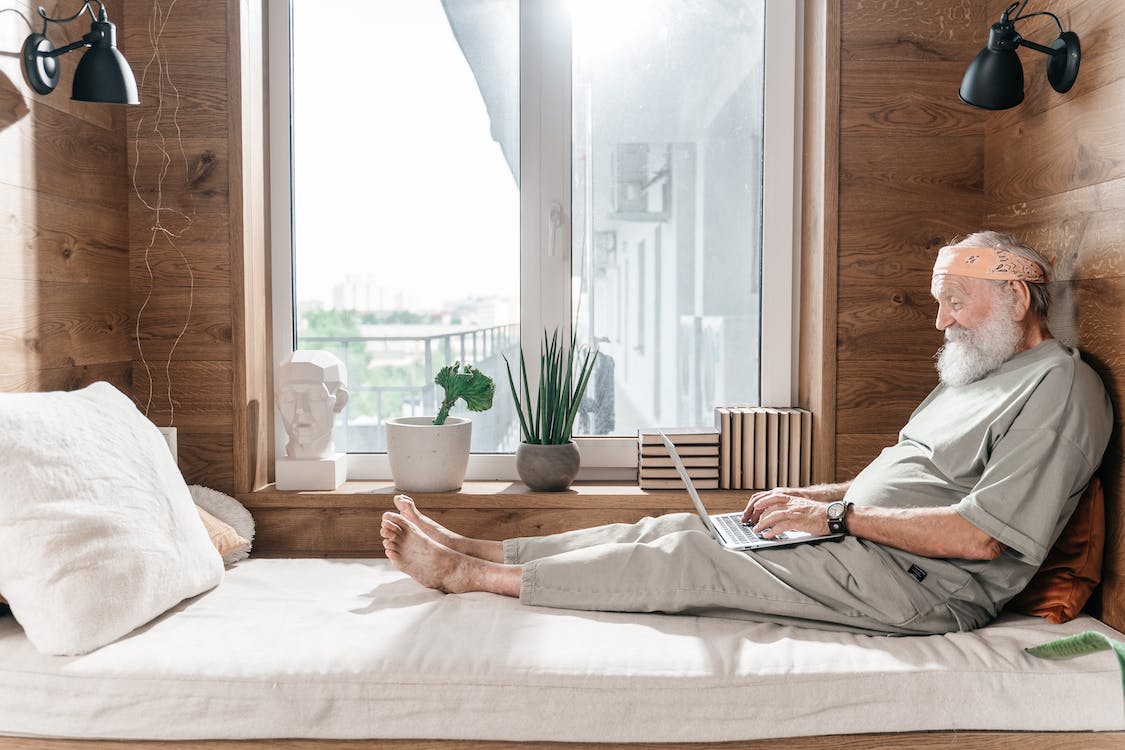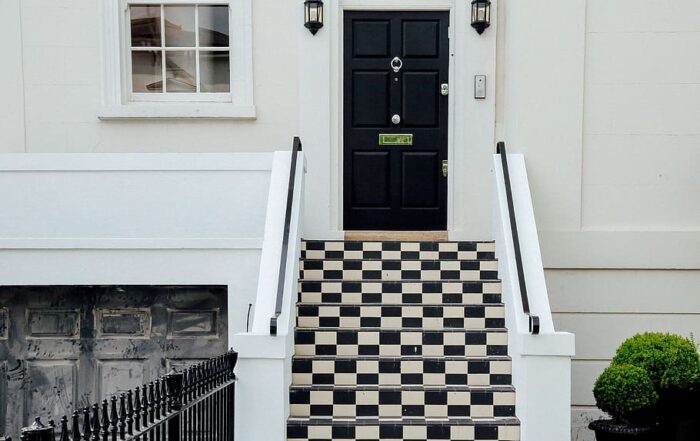
Smart Home Technologies Supporting Aging in Place
Date Posted:
October 14, 2022
Share This:
Smart home technology offers both practical and fun benefits for people of all ages.
However, smart tech has especially helpful options for older adults, who increasingly prefer to remain at home as they age. In fact, per the AARP, 77% of older adults want to age in place.
As long as your health permits, who wouldn’t rather stay home than move to an assisted living facility?
Why Should I Create a Smart Home for Aging in Place?
Well, a smart home for aging in place provides safety as well as comfort. And smart home technologies supporting aging in place are in demand. The AARP notes remarkable smart tech trends among older adults:
- 59% are interested in smart tech for security.
- 48% would like to monitor windows and doors with smart tech.
- 42% would like to be able to turn off appliances automatically.
- 39% want discreet and/or integrated devices that detect falls and call for aid.
- 38% would like to control thermostats virtually.
These percentages are bound to rise in following decades, as generations who grew up with smart tech begin to age. For the foreseeable future, a smart home for aging in place is a worthwhile investment.
Authors from The New York Times have written an extensive article on technologies supporting aging in place, including equipment lists and prices. They also cover smart tech for people with disabilities. You may find both pieces incredibly helpful.
Here, we’ll offer an overview of these smart tech options.
You can take a broad look and decide whether a smart home for aging in place is right for you. If so, working with a trusted audiovisual (AV) company takes the hassle and confusion out of installing, connecting and integrating smart systems.
[Related: Home AV Systems: Planning for Expansion]
The Smart Home for Aging in Place: Benefits and Options
Practically all smart technologies can benefit older adults aging in place.
With the skyrocketing cost of U.S. assisted living facilities, it makes perfect sense to integrate smart home tech that supports older adults’ needs. They can live their golden years in their preferred space, and caregivers can monitor them as needed — and as older adults permit.
Note: Always consider older adults’ feelings and opinions before installing smart tech when you’re a caregiver, family member or friend. If they feel the tech is invasive or too difficult to operate, explore other options or give them more information. No matter how pure your intent is, obtaining older adults’ explicit consent is crucial.
Now, let’s explore smart home technologies supporting aging in place. When going through the array of options, three qualities stand out: security, health care support and convenience. Other factors, like entertainment and ease of use, are also important to keep in mind.
Security
Of all smart home technologies supporting aging in place, smart security tech routinely ranks first among older adults.
Surveillance
Smart surveillance systems provide easy-to-use, all-in-one monitoring capabilities.
And modern systems don’t stick out like a sore thumb. A smart home surveillance system includes much more than a bulky wall-mounted camera — it provides 24/7 access via networking.
With smartphone use on the rise among older adults, the ability to monitor your home from anywhere is easier than ever. For caregivers, the ability to check on a loved one’s safety is also invaluable (again, with their permission).
Whether you’re at home or out and about, you can check on your property and take action if needed:
- View the home’s interior and exterior.
- Check video from multiple angles.
- Record and review footage.
- Adjust viewing from room to room and from indoors to outdoors.
- Call for help if you see or suspect criminal activity.
Besides offering physical security, smart security systems can boost mental health. Feeling vulnerable or isolated can lead to depression among older adults. Fortunately, widely available smart security systems can allay worries.
When planning a smart home for aging in place, an AV company can help you find sleek, affordable smart surveillance systems.
Other Smart Home Options
Other smart home features, like lighting control and smart locks, provide additional security. You can activate smart lighting via voice control, motion sensors, tablets and more.
Smart locks offer short- and long-distance benefits. For example, if you forgot to lock the back door before going shopping, you can activate locks from your smartphone. If you’re indoors and hear suspicious noises outside, you can prompt the system and ensure doors are secure.
When you have a fully integrated smart home for aging in place, surveillance systems connect. This connectivity allows you to change settings, check cameras and call law enforcement — all from one place.
[Related: 7 Reasons to Install a Home Surveillance System]
Health Care Support
Another major benefit of smart home technologies supporting aging in place is the ability to call for help easily if an injury occurs.
But the benefits go far beyond calling for an ambulance. From monitoring medication to checking blood glucose levels, a smart tech device that integrates with your smart home is likely available.
Fall Assistance and Physical Safety
Older adults can use voice assistants, smartphones, tablets and other devices to call for help or ask a caregiver to drop by. This is particularly critical if falls are frequent — you may not always have a phone nearby.
Meanwhile, caregivers can conduct routine check-ins, ensure a loved one is safe (perhaps they’re not answering their phone) and summon paramedics if needed. When older adults suffer from memory loss, circulatory issues or diabetes, this can mean the difference between a doctor’s visit and a hospital stay.
Other important features, like lighting control and climate control, benefit physical safety and comfort. With smart home systems, older adults and caregivers with access can adjust systems remotely.
Lighting control helps prevent slips, trips and falls — no more fumbling for switches. You can change the light level via voice command or set the system to brighten and dim as the natural light changes. When you’re ready to fall asleep, you can let the lights go dark gradually or turn them off at once.
With motorized window treatments, another lighting control option, you never need to deal with curtains or blinds again. You can control your home’s brightness for around-the-clock safety (and save money on utility bills).
And with climate control, you can change your home’s temperature from anywhere or set it to remain at a steady level. Caregivers with access can ensure a loved one didn’t forget to turn on heating or cooling or accidentally set the temperature too high or low.
Other Smart Home Options
Besides installed systems, smart home technologies supporting aging in place extend to personal items. These smart devices communicate with your smart home for integrated health insights.
Let’s start with smart watches. These aren’t cumbersome pendants with a single button that calls 911 (although they can do that, too). Smart watches can check for falls, ask whether you need help and even monitor vital signs.
With a networked smart home system, you can check health trends and look for possible warning signs. Doctors and caregivers can also keep an eye on any dangerous changes using those accurate digital records.
Next, smart pill dispensers can ensure you don’t forget a dose or double-medicate. With smart home networking, you can get reminders to take medicine via a voice assistant, smartphone or smart watch. The device then dispenses medication on schedule.
Smart smoke and carbon monoxide (CO) detectors can monitor exact smoke and CO levels and call for help if needed. For example, they won’t send the fire department your way if you let the bacon get too crisp for just a few seconds.
Plus, problems hearing an alert or alarm can arise as older adults age in place. With smart home devices, caregivers can receive remote alerts, check on the older adult and then make any necessary emergency calls.
When putting together a complete smart home for aging in place, consider installing smart motion sensors. These devices attach to doors and windows, then send notifications if they’ve been open too long. They provide both health care support and security, especially if older adults struggle with memory or mobility issues.
Like most — if not all — smart devices, the sensors integrate with voice-activated virtual assistants. Older adults and caregivers can notify speakers to turn off the alarm (say, a stray cat just scratched at the door) or call for professional help.
[Related: 5 Considerations for Installing an Effective Home Surveillance System]
Convenience
A smart home for aging in place doesn’t have to be only security- and health-based. Older adults enjoy easy access to entertainment as much as any other age group. And with smart devices, there’s no worrying about lost remotes or hard-to-reach switches.
Entertainment
Smart speakers aren’t just for voice-prompted assistance.
High-performance audio helps you hear music, movies and TV shows from any room in the house. Controlling the volume via phone or smart speaker cuts the annoyance of standing to adjust sound or fumbling for the right remote.
And of course, like other smart home tech, this also boosts safety. You can hold and hear phone calls from any room. If you’re in the bath and need to pick up or make an important call, smart home technologies supporting aging in place make that possible.
If older adults have vision problems, a smart home theater offers clear visuals and sound. As with other smart devices, you can use voice commands or an app to control channels, volume and more. Plus, it’s easy to brighten, sharpen and enlarge images.
Other Smart Home Options
This might be a surprising item on the list! A hidden TV in mirror system can add entertainment as well as safety options to a smart home for aging in place.
You can relax and enjoy as a mirror transforms into a crisp television that’s integrated with smart speakers and apps. It’s luxurious, sure, but it also offers options for making calls, checking the time and getting weather alerts.
You can change channels and adjust volume from the bath or bedroom with touch-free systems. There’s no standing or walking in the dark to worry about (of course, you can activate your lighting control system, too).
And naturally, a TV in mirror system is private and secure. The same applies to all properly installed smart home systems. Your personal information, data and surveillance footage are yours and yours alone.
However, we recommend working with an AV installation company for peace of mind.
When you enlist an AV company, you have assurance that all your systems are protected. As an extra but important perk, AV consultants work with your home’s design — no huge overhaul required.
[Related: Are Smart Home Devices Secure?]
Contact AV Smart Solutions for More Information
At AV Smart Solutions, we want to help you reach your goals as you or a loved one ages in place. We’ll work with your budget, and our AV consultants will give you all the information you need and offer ongoing tech support.
You can choose from multiple smart home system packages. If you’d like, we’ll customize those smart home packages to make sure you’re satisfied with the results.
Because smart home technologies supporting aging in place offer so many options, we’ll partner with you to find what fits your needs best. And if you decide to add other smart systems later, we’ll help.
After all, smart tech should make your life easier — not more difficult.
Give us a call at (425) 655-5052, or fill out our Inquiry Form. One of our specialists will get in touch quickly!
Featured image via Pexels


